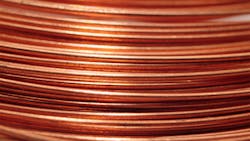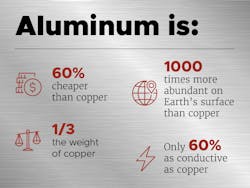Cooking Up a Conductive Alternative to Copper with Aluminum
Article by Alexandra Freibott, PNNL
In the world of electricity, copper is king—for now. That could change with new research from Pacific Northwest National Laboratory (PNNL) that is serving up a recipe to increase the conductivity of aluminum, making it economically competitive with copper. This research opens the door to experiments that, if fully realized, could lead to an ultra-conductive aluminum alternative to copper that would be useful in markets beyond transmission lines, revolutionizing vehicles, electronics, and the power grid.
“What if you could make aluminum more conductive—even 80% or 90% as conductive as copper? You could replace copper and that would make a massive difference because more conductive aluminum is lighter, cheaper, and more abundant,” said Keerti Kappagantula, PNNL materials scientist and co-author on the research. “That's the big picture problem that we're trying to solve.”
Copper vs. aluminum
Copper demand is fast outpacing its current availability, driving up its cost. Copper is a great electrical conductor—it’s used in everything from handheld electronics to underwater transmission cables that power the internet—but there’s no escaping the fact that copper is becoming less available and more expensive. These challenges are only expected to get worse with the rising number of electric vehicles (EVs), which need twice as much copper as traditional vehicles. Plus, copper is heavy, which drives down EV efficiency.
Aluminum is just one-third the price and weight of copper, but it is only about 60% as conductive. Aluminum’s relatively low conductivity can be a limitation in some real-world applications.
“Conductivity is key because a lighter weight wire with equivalent conduction can be used to design lighter motors and other electrical components, so your vehicle can potentially go longer distances,” said Kappagantula. “Everything from a car’s electronics to energy generation to transmitting that energy to your home via the grid to charge your car’s battery—anything that runs on electricity—it can all become more efficient.”
For more information, read the full article on PNNL's website.

